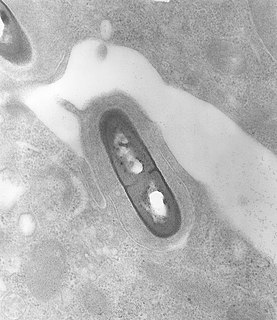
Hazard analysis and critical control points, or HACCP, is a systematic preventive approach to food safety from biological, chemical, and physical hazards in production processes that can cause the finished product to be unsafe and designs measures to reduce these risks to a safe level. In this manner, HACCP attempts to avoid hazards rather than attempting to inspect finished products for the effects of those hazards. The HACCP system can be used at all stages of a food chain, from food production and preparation processes including packaging, distribution, etc. The Food and Drug Administration (FDA) and the United States Department of Agriculture (USDA) require mandatory HACCP programs for juice and meat as an effective approach to food safety and protecting public health. Meat HACCP systems are regulated by the USDA, while seafood and juice are regulated by the FDA. All other food companies in the United States that are required to register with the FDA under the Public Health Security and Bioterrorism Preparedness and Response Act of 2002, as well as firms outside the US that export food to the US, are transitioning to mandatory hazard analysis and risk-based preventive controls (HARPC) plans.

Listeria monocytogenes is the species of pathogenic bacteria that causes the infection listeriosis. It is a facultative anaerobic bacterium, capable of surviving in the presence or absence of oxygen. It can grow and reproduce inside the host's cells and is one of the most virulent foodborne pathogens: 20 to 30% of foodborne listeriosis infections in high-risk individuals may be fatal. Responsible for an estimated 1,600 illnesses and 260 deaths in the United States annually, listeriosis ranks third in total number of deaths among foodborne bacterial pathogens, with fatality rates exceeding even Salmonella spp. and Clostridium botulinum. In the European Union, listeriosis follows an upward trend that began in 2008, causing 2,161 confirmed cases and 210 reported deaths in 2014, 16% more than in 2013. Listeriosis mortality rates are also higher in the EU than for other foodborne pathogens.

Listeria is a genus of bacteria that acts as an intracellular parasite in mammals. Until 1992, 17 species were known, each containing two subspecies. By 2020, 21 species had been identified. The genus is named in honour of the British pioneer of sterile surgery Joseph Lister. Listeria species are Gram-positive, rod-shaped, and facultatively anaerobic, and do not produce endospores. The major human pathogen in the genus Listeria is L. monocytogenes. It is usually the causative agent of the relatively rare bacterial disease listeriosis, an infection caused by eating food contaminated with the bacteria. Listeriosis can cause serious illness in pregnant women, newborns, adults with weakened immune systems and the elderly, and may cause gastroenteritis in others who have been severely infected.
The National Microbiology Laboratory (NML) is part of the Public Health Agency of Canada (PHAC), the agency of the Government of Canada that is responsible for public health, health emergency preparedness and response, and infectious and chronic disease control and prevention.

Food microbiology is the study of the microorganisms that inhabit, create, or contaminate food. This includes the study of microorganisms causing food spoilage; pathogens that may cause disease ; microbes used to produce fermented foods such as cheese, yogurt, bread, beer, and wine; and microbes with other useful roles, such as producing probiotics.

Food safety is used as a scientific method/discipline describing handling, preparation, and storage of food in ways that prevent food-borne illness. The occurrence of two or more cases of a similar illness resulting from the ingestion of a common food is known as a food-borne disease outbreak. This includes a number of routines that should be followed to avoid potential health hazards. In this way, food safety often overlaps with food defense to prevent harm to consumers. The tracks within this line of thought are safety between industry and the market and then between the market and the consumer. In considering industry to market practices, food safety considerations include the origins of food including the practices relating to food labeling, food hygiene, food additives and pesticide residues, as well as policies on biotechnology and food and guidelines for the management of governmental import and export inspection and certification systems for foods. In considering market to consumer practices, the usual thought is that food ought to be safe in the market and the concern is safe delivery and preparation of the food for the consumer. Food safety, nutrition and food security are closely related. Unhealthy food creates a cycle of disease and malnutrition that affects infants and adults as well.

Pascale Cossart is a French bacteriologist who is affiliated with the Pasteur Institute of Paris. She is the foremost authority on Listeria monocytogenes, a deadly and common food-borne pathogen responsible for encephalitis, meningitis, bacteremia, gastroenteritis, and other diseases.

William "Bill" Marler is an American personal injury lawyer and food safety advocate. He is the managing partner of Marler Clark, a law firm based in Seattle, Washington which specializes in foodborne illness cases.
The National Advisory Committee on Microbiological Criteria for Foods was established in 1988 to advise the Secretaries of Agriculture and Health and Human Services concerning the development of science-based, microbiological standards by which the safety of foods can be evaluated and by which plant sanitation and processing systems can be improved.

The Food Safety and Inspection Service (FSIS), an agency of the United States Department of Agriculture (USDA), is the public health regulatory agency responsible for ensuring that United States' commercial supply of meat, poultry, and egg products is safe, wholesome, and correctly labeled and packaged. The FSIS draws its authority from the Federal Meat Inspection Act of 1906, the Poultry Products Inspection Act of 1957 and the Egg Products Inspection Act of 1970. The FSIS also acts as a national health department and is responsible for the safety of public food-related establishments as well as business investigation.

The 1992-1993 Jack in the Box E. coli outbreak occurred when the Escherichia coli O157:H7 bacterium killed four children and infected 732 people across four states. The outbreak involved 73 Jack in the Box restaurants in California, Idaho, Washington, and Nevada, and has been described as "far and away the most infamous food poison outbreak in contemporary history." The majority of the affected were under 10 years old. Four children died and 178 others were left with permanent injury including kidney and brain damage.
Listeria ivanovii is a species of bacteria in the genus Listeria. The listeria are rod-shaped bacteria, do not produce spores, and become positively stained when subjected to Gram staining. Of the six bacteria species within the genus, L. ivanovii is one of the two pathogenic species. In 1955 Bulgaria, the first known isolation of this species was found from sheep. It behaves like L. monocytogenes, but is found almost exclusively in ruminants. The species is named in honor of Bulgarian microbiologist Ivan Ivanov. This species is facultatively anaerobic, which makes it possible for it to go through fermentation when there is oxygen depletion.
Catherine Wright Donnelly is Professor of Nutrition and Food Science at the University of Vermont, and the Editor-in-Chief of The Oxford Companion to Cheese, which won the 2017 James Beard Award for Reference and Scholarship.
Kathryn J Boor is an American food scientist and academic administrator. She is the dean of Cornell University Graduate School and vice provost for graduate education. Previously she served as the Ronald P Lynch Dean of the Cornell University College of Agriculture and Life Sciences.

Food safety in the United States relates to the processing, packaging, and storage of food in a way that prevents food-borne illness within the United States. The beginning of regulation on food safety in the United States started in the early 1900s, when several outbreaks sparked the need for litigation managing food in the food industry. Over the next few decades, the United States created several government agencies in an effort to better understand contaminants in food and to regulate these impurities. Many laws regarding food safety in the United States have been created and amended since the beginning of the 1900s.
Welton Ivan Taylor was an American microbiologist, inventor and civil rights activist. He is known for his work on food-borne pathogens, notably for developing tests for Salmonella and for inventing the XLD agar, which can be used to isolate Salmonella and Shigella bacteria.
Kathryn McDonald is an American scientist who is Bloomberg Distinguished Professor at the Johns Hopkins University. She serves as co-director of the Johns Hopkins Center for Diagnostic Excellence. McDonald previously led the Centre for Health Policy at Freeman Spogli Institute for International Studies. Her research considers what makes for high-quality and safe healthcare delivery systems.
Lawrence Goodridge is the Leung Family Professor of Food Safety at the University of Guelph and Director of Guelph's Canadian Research Institute for Food Safety. Goodridge studies detection of and protection from food- and water-borne pathogens such as escherichia coli, salmonella and listeria. He uses wastewater testing to study the spread of COVID-19 and other diseases.
Theresa Marie Koehler is an American microbiologist who is the Herbert L. and Margaret W. DuPont Distinguished Professor in Biomedical Sciences and Chair of the Department of Microbiology and Molecular Genetics at McGovern Medical School. She is known for her extensive research on anthrax and was elected Fellow of the American Association for the Advancement of Science in 2021.

Milk borne diseases are any diseases caused by consumption of milk or dairy products infected or contaminated by pathogens. Milk borne diseases are one of the recurrent foodborne illnesses— between 1993 to 2012 over 120 outbreaks related to raw milk were recorded in the US with approximately 1,900 illnesses and 140 hospitalisations. With rich nutrients essential for growth and development such as proteins, lipids, carbohydrates, and vitamins in milk, pathogenic microorganisms are well nourished and are capable of rapid cell division and extensive population growth in this favourable environment. Common pathogens include bacteria, viruses, fungi, and parasites and among them, bacterial infection is the leading cause of milk borne diseases.










